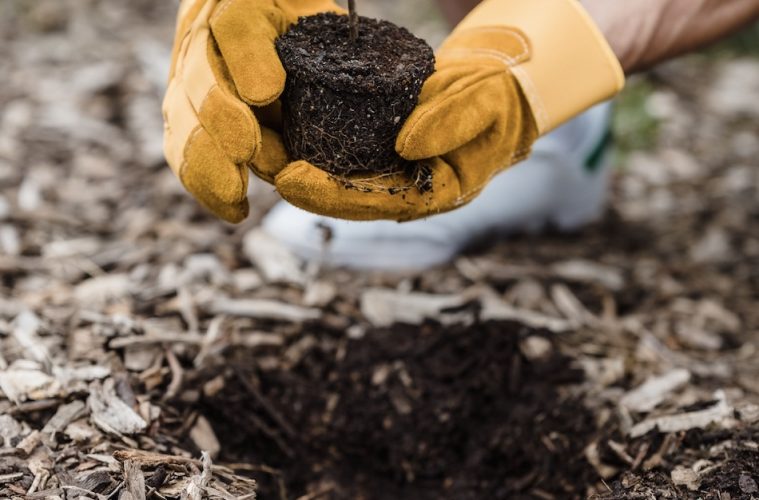During the winter months, your plants have been hibernating and are now slowly awakening and will need your help to prepare for the burst of life that comes with Spring. This preparation can be broken down into three main components, namely cleansing, feeding and planting.
Cleansing
Everything needs a good spring clean from time to time and your garden is no different. Clear out all
weeds, debris and woody plants that have not survived the cold. Sort through your garden and potted plants, letting go of those you no longer want while making space for something new.
Prune your trees, shrubs and roses. This will promote new growth, flower production and ventilation, helping to fight against disease. Remember to take a few steps back throughout the pruning process to ensure you achieve the desired shape you want, have removed all dead or diseased branches, and have opened up the shape by removing any branches that cross. Also prune away a third of woody shrubs, like rosemary.
Often, people tend to get a bit too creative with their lawn edging, and what was once a straight line, now resembles a child’s doodle, so fight the urge! Creating a clear line between your lawn and flower beds can have a massive impact on the overall look of your garden.
Feeding
• In early spring, a fertilizer with high phosphorous and potassium content (2:1:2 or 3:1:5), will help
strengthen your plants root system, build up its natural protection against disease and accommodate flower and seed production.
• Pot plants leach nutrients and the soil needs regular nutrient replenishment. A liquid fertilizer for
leafy indoor pot plants, twice a month during spring and summer, is best.
• Re-pot plants that have outgrown their containers into bigger ones or directly into the garden. Mulching garden beds and pots with compost or woodchip is an important way to retain water,
slowly release nutrients into the soil, suppress weed growth, and interrupt pest lifecycles. Do not
disturb the existing topsoil, instead spread mulch up to 10cm thick in garden beds and pots. This is
also a good time to apply lawn dressing and fertilizer.
Planting
Split-up clump-forming plants and succulents (eg. agapanthus, strelitzia, aloes andcrassula) by digging them up, shaking the soil off the roots, and using a spade or your hands to separate clumpst. These can then be used to fill open spots in the garden.
Cuttings are another great way to introduce new species into your collection. To make cuttings from
perennial shrubs, like honeysuckle, you can use a rooting hormone or a mixture of honey and cinnamon. Always try to use a sharp, clean knife or pruning clippers to make a smooth clean cut. This reduces an exposed surface area and exposure to disease and infection.
When it comes to gardening, less is more. Decide on your colour palette or textures, and select no more than three species to plant in larger groups. Repeat the pattern throughout your garden or pot collection.
Go to your local nursery and get excited about the selection of summer bulbs, annuals, veggies and
shrubs. You can even check out your friends’ and neighbours’ gardens for new and interesting species.
ALSO SEE 5 TIPS FOR GROWING VEGGIES

